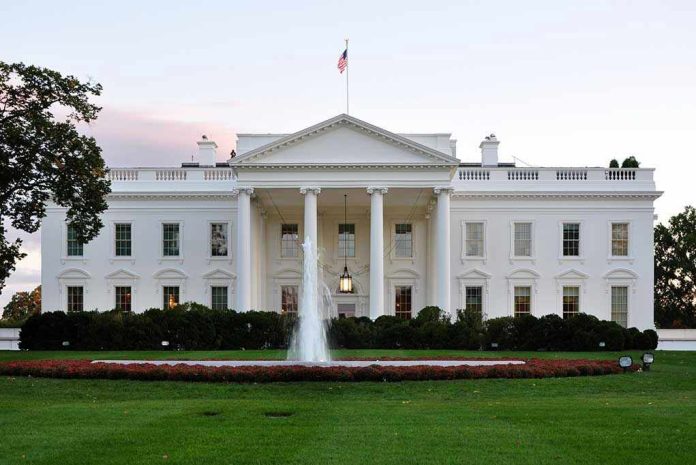
Representative Eric Swalwell’s call to demolish President Trump’s new White House ballroom challenges conservative values, igniting debate over its symbolism and impact.
Story Snapshot
- Swalwell demands 2028 Democratic candidates pledge to demolish Trump’s ballroom.
- The $250 million ballroom is privately funded, not taxpayer-funded.
- Demolition debate highlights broader questions about presidential legacies.
- Conservative voices criticize the demand as an attack on presidential authority.
Swalwell’s Controversial Demand
On October 25, 2025, Rep. Eric Swalwell, a Democrat from California, demanded that all 2028 Democratic presidential candidates pledge to demolish President Donald Trump’s newly constructed White House ballroom. His demand, issued on social media, sets a litmus test for candidates, intensifying the political discourse around Trump’s modifications to the White House. Swalwell’s call frames opposition to these changes as a core Democratic value, sparking debates on presidential legacies and priorities.
The ballroom, a 90,000-square-foot addition where the East Wing once stood, marks the first formal ballroom in the White House’s history. It is designed to host 650 seated guests and maintains architectural consistency with the existing structure. The project, announced on July 31, 2025, is privately funded, with no taxpayer dollars involved. Despite its grandeur, the ballroom has become a focal point for political contention, illustrating the deep divides over Trump’s presidency.
The Broader Implications
Swalwell’s demand raises significant questions about presidential power and legacy. Critics argue that the call to demolish the ballroom disregards the historical precedent of presidential modifications to the White House, which have occurred throughout history. The call for demolition also underscores a symbolic battle over Trump’s alterations, with some Democrats viewing them as violations of the “People’s House.” The debate over whether to prioritize such symbolic acts over substantive policy changes is now a crucial topic within Democratic circles.
Democratic base voters are reportedly outraged by the ballroom’s construction, seeing it as emblematic of Trump’s broader governance style. Swalwell’s demand attempts to capitalize on this sentiment, positioning opposition to the ballroom as a rallying point for a future Democratic administration. However, the demand also poses a dilemma: it risks alienating moderate voters who perceive the demolition pledge as unnecessary and wasteful.
Conservative Critique and Reflection
From a conservative standpoint, Swalwell’s demand is seen as an attack on presidential authority and a distraction from more pressing governance issues. Conservative voices argue that the focus should remain on preserving the constitutional rights and values that are fundamental to American democracy. The projected $250 million cost of the ballroom, funded without taxpayer money, is cited as a responsible financial decision, reflecting conservative principles of fiscal responsibility and private investment.
As the 2028 election approaches, the ballroom’s fate remains uncertain. Whether Swalwell’s demand becomes a defining issue or fades into the backdrop will depend on how candidates and voters respond. For conservatives, the focus remains on promoting governance that respects individual liberty, limited government, and traditional values, ensuring that the White House remains a symbol of national unity rather than political division.
Sources:
Message Box News: Why tearing down Trump’s ballroom is a controversial demand
AOL News: Swalwell demands 2028 Dem candidates to vow to destroy Trump’s ballroom







